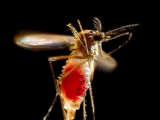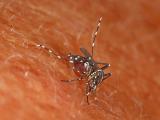Sep 30, 2003 (CIDRAP News) Federal health officials yesterday released a 37-page report that they say demonstrates "tremendous progress" in developing countermeasures for bioterrorism through federally funded research since early 2002.
The report, by the National Institute of Allergy and Infectious Diseases (NIAID), describes research on Category A agents, the pathogens that experts think terrorists would most likely use to try to spread disease. Diseases associated with Category A agents are anthrax, smallpox, plague, tularemia, botulism, and viral hemorrhagic fevers.
Titled "NIAID Biodefense Research agenda for CDC Category A AgentsProgress Report," the document describes steps the NIAID has taken since February 2002 to promote the development of vaccines, treatments, and diagnostics. February 2002 was when the agency assembled a committee of experts to identify the most urgent research needs, according to a NIAID news release.
"NIAID has greatly expanded its network of industry and academic partners in biodefense, and together they have made tremendous strides in a very short time towards developing countermeasures to protect all Americans from bioterrorism," Health and Human Services Secretary Tommy Thompson stated in the news release. NIAID Director Anthony S. Fauci added that the biodefense research is helping in the battle against naturally occurring diseases such as SARS and West Nile virus.
The NIAID has launched more than 50 initiatives to stimulate biodefense research, three quarters of which are new, officials said. The efforts include product development, basic research, expansion of research resources and facilities, and immunology research.
The agency reported it has awarded 31 grants to companies to develop high-priority biodefense products. Officials said this effort is attracting more companies to infectious disease research and will probably shorten the time from preclinical testing to commercial release of products.
Basic research programs include the recent designation and funding of eight regional academic "centers of excellence" for research on biodefense and emerging infectious diseases. In addition, the NIAID has made a "significant investment" in sequencing pathogen genomes. "Researchers have sequenced genomes representative of all bacteria considered bioterror threats, and are sequencing genomes for at least one strain of every potential viral and protozoal bioterror pathogen," the release states. Also, many individual investigators have received NIAID grants to study the prevention, diagnosis, and treatment of Category A diseases.
The agency said it is also funding the construction of facilities around the country to remedy the shortage of laboratories that can safely conduct biodefense research. Other initiatives include contracts to screen new drugs, develop new animal models of disease, set up a reagent and specimen repository, and provide researchers with genomic, proteomic, and "bioinformatic" resources.
The report details research efforts related to each Category A pathogen. For example, the anthrax section says that scientists identified the anthrax toxin receptor, the protein on the surface of mammalian cells to which the anthrax toxin binds. They then developed a soluble version of the receptor, which shows promise for use as a decoy designed to bind anthrax toxin before it can attach to target cells, according to the report.
See also:
Sep 29 NIAID press release
http://www.niaid.nih.gov/news/newsreleases/2003/Pages/biodefensereport2003.aspx




















